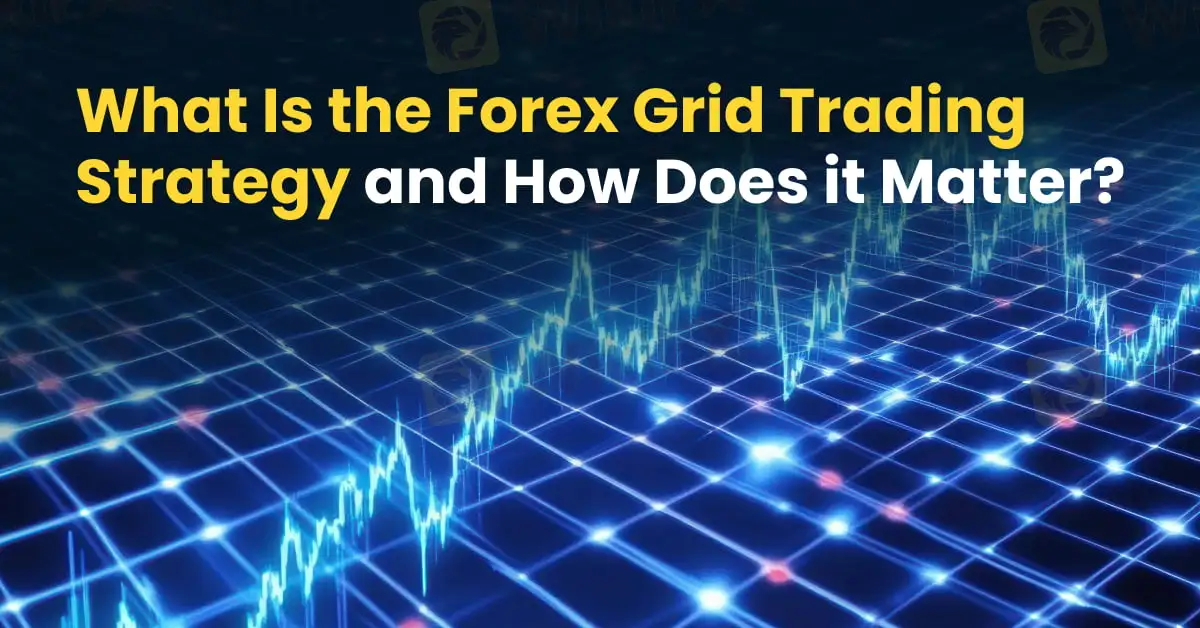Gold Outlook: Record Highs Test Momentum Into Year-End
Gold reached its latest record high during quiet trade on Monday. The question for traders now is whether it can sustain momentum into the year end with depleting volumes.
简体中文
繁體中文
English
Pусский
日本語
ภาษาไทย
Tiếng Việt
Bahasa Indonesia
Español
हिन्दी
Filippiiniläinen
Français
Deutsch
Português
Türkçe
한국어
العربية
Abstract:The forex grid trading strategy stands out as a semi-automated system that harnesses market volatility, aiming to capture gains from natural price fluctuations without requiring precise directional forecasts.

The forex grid trading strategy stands out as a semi-automated system that harnesses market volatility, aiming to capture gains from natural price fluctuations without requiring precise directional forecasts.
A grid trading strategy uses a network of buy and sell stop orders at predetermined intervals around a central price. Once the grid is established, it operates semi-automatically:
Grid Setup
Order Execution
Because the system doesnt rely on predicting whether the market will rise or fall overall, it can profit in range-bound and slowly trending environments.
Different grid variations adapt to varying market conditions and trader preferences:
Once set up in a trading platform, the grid system requires minimal manual intervention, freeing traders from constant monitoring.
Each order typically involves a small position size, spreading risk across multiple levels rather than concentrating it in one large trade.
The strategy profits from any price movement, making it effective when market direction is uncertain.
With various grid types (pure, modified, double), traders can tailor the approach to different volatility regimes.
In a pronounced uptrend or downtrend, the strategy may accumulate losing positions on the side opposite the trend, leading to drawdowns.
Multiple orders can incur significant spreads and commissions, which may erode profits, especially for tight grid spacings.
Holding numerous positions simultaneously demands sufficient account equity; unexpected volatility spikes can trigger margin calls.
Align spacing with average true range (ATR) to reflect current market volatility.
Set maximum drawdown limits and use trailing stops or time-based grid resets.
Economic announcements can trigger breakouts beyond the grid range; consider pausing the grid during high-impact releases.
The forex grid trading strategy offers a robust framework to capitalize on market oscillations while minimizing the need for directional forecasting. By leveraging automation and diversified entries, traders can achieve consistent, small-scale profits across various conditions. However, prudent risk management and adaptability are crucial to mitigate the inherent challenges of trending markets and transaction costs. When applied thoughtfully—with the right grid type, spacing, and safeguards—grid trading can become a valuable addition to any traders toolkit.

Disclaimer:
The views in this article only represent the author's personal views, and do not constitute investment advice on this platform. This platform does not guarantee the accuracy, completeness and timeliness of the information in the article, and will not be liable for any loss caused by the use of or reliance on the information in the article.

Gold reached its latest record high during quiet trade on Monday. The question for traders now is whether it can sustain momentum into the year end with depleting volumes.

The year 2026 is expected to be a period of high volatility in the forex market, which from an astrological perspective is viewed as an opportunity for traders who maintain discipline and manage risk effectively. Four zodiac signs stand out in terms of financial prospects: Cancer, which is well suited for long-term trading; Aries, which favors short-term trading but requires strong emotional control; Taurus, which shows strength in generating supplementary income within the trading industry; and Libra, which is best aligned with systematic, rule-based trading. However, astrology serves only as a psychological support tool. True success in trading ultimately depends on a trader’s planning, discipline, and risk management rather than luck alone.

With the year ending and 2026 just around the corner, here comes the golden question: are you profitable this year? If not, this article is a must-read!

ZarVista changed its name from ZaraFX in September 2024. It claims to be a worldwide broker offering various services. It offers the popular MetaTrader 5 (MT5) platform, high leverage of up to 1:500, and various account types tailored to different traders. However, when we look closer, we find many serious risks that anyone thinking about using it should know about. The main problem is how it's regulated - it operates in offshore locations that don't watch financial companies very closely. This gets worse when you add the many user complaints about problems getting their money out, plus a serious legal investigation by Indian authorities in 2025. This review will break down these problems and give you a clear picture of this broker. You need to do careful research, and we suggest you check any broker's current regulatory status and user reviews yourself. A tool like WikiFX can give you current information and important risk warnings.
